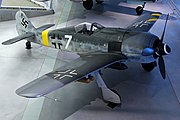m (Remove some templates. interwiki links, delink non military terms, cleanup and move Wikipedia link above categories, replaced: Image: → File:, replaced: == References == {{Reflist}} Category:Cross symbols [[Category:Military of the German ...) |
m (Remove some templates. interwiki links, delink non military terms, cleanup and move Wikipedia link above categories) |
||
| Line 4: | Line 4: | ||
The Iron Cross used by today's German ''[[Bundeswehr]]'' unified defense forces inherits the four white, or lighter-colored, "flanks" of the older ''Balkenkreuz'' that do not "cap" the ends of the cross in either case, but with the "flanks" following the flared arms of the earlier [[German Empire]]'s Iron Cross ''(Eisernes Kreuz)'' instead [[:File:Cross-Pattee-alternate3.svg|from the 1916-March 1918 era]]. |
The Iron Cross used by today's German ''[[Bundeswehr]]'' unified defense forces inherits the four white, or lighter-colored, "flanks" of the older ''Balkenkreuz'' that do not "cap" the ends of the cross in either case, but with the "flanks" following the flared arms of the earlier [[German Empire]]'s Iron Cross ''(Eisernes Kreuz)'' instead [[:File:Cross-Pattee-alternate3.svg|from the 1916-March 1918 era]]. |
||
| − | The ''balkenkreuz'' is often incorrectly translated as the "Balkan Cross", but it has nothing whatever to do with the |
+ | The ''balkenkreuz'' is often incorrectly translated as the "Balkan Cross", but it has nothing whatever to do with the Balkans. More correct translations would be "beam cross", "bar cross"<ref>{{cite web|title=Dictionary of Vexillology: B (Banner Roll - Bauceant)|url=http://flagspot.net/flags/vxt-dvb1.html#barcross|work=Dictionary of Vexillology|publisher=FOTW Flags Of The World|accessdate=19 August 2012}}</ref> or "balk cross".<ref>{{cite web|title=Dictionary of Vexillology: B (Backing - Banner of Victory)|url=http://flagspot.net/flags/vxt-dv-b.html#balkcross|work=Dictionary of Vexillology|publisher=FOTW Flags Of The World|accessdate=19 August 2012}}</ref> |
{{Gallery |
{{Gallery |
||
Revision as of 06:13, 27 March 2014
The straight-armed Balkenkreuz, which is a stylized version of the Iron Cross, was the emblem of the World War II Wehrmacht (German Armed Forces) and its branches: Heer (Army), Luftwaffe (Air Force), and Kriegsmarine (Navy).
The Iron Cross used by today's German Bundeswehr unified defense forces inherits the four white, or lighter-colored, "flanks" of the older Balkenkreuz that do not "cap" the ends of the cross in either case, but with the "flanks" following the flared arms of the earlier German Empire's Iron Cross (Eisernes Kreuz) instead from the 1916-March 1918 era.
The balkenkreuz is often incorrectly translated as the "Balkan Cross", but it has nothing whatever to do with the Balkans. More correct translations would be "beam cross", "bar cross"[1] or "balk cross".[2]
<templatestyles src="Template:Gallery/styles.css"></templatestyles>

The Smithsonian's faithfully-restored Fw 190F, showing both forms of Balkenkreuz in "low-visibility" flanks-only form
It was first adopted in mid-April 1918 by the Luftstreitkräfte of World War I Germany, only about a week before the death of Manfred von Richthofen, and used from that time to the end of World War I,[3] and its use resumed, with new standardized dimensions from the beginning of the Third Reich's Luftwaffe in 1935, to the end of World War II in Europe, always with the central black "core" cross having a stroke width one-quarter as wide as its length from end to end. The Luftwaffe would use two specifications for the Balkenkreuz, one with narrower white "flanks" on upper wing surfaces - before July 1939, it was used in all six regular positions on an airframe - and one with wider white "flanks" surrounding the same width (25% wide as long from end to end for both versions) central black cross beneath the wings and on the fuselage sides of German military aircraft during the war years.[4]
Late in the war, it was increasingly common for the Balkenkreuz national insignia to be painted on without the black-color "core cross", using only the quartet of right-angled "flanks" for its form to reduce its visibility - this could be done in either white or black, and with both the narrow and wide-flank forms of the cross.
References
- ↑ "Dictionary of Vexillology: B (Banner Roll - Bauceant)". Dictionary of Vexillology. FOTW Flags Of The World. http://flagspot.net/flags/vxt-dvb1.html#barcross. Retrieved 19 August 2012.
- ↑ "Dictionary of Vexillology: B (Backing - Banner of Victory)". Dictionary of Vexillology. FOTW Flags Of The World. http://flagspot.net/flags/vxt-dv-b.html#balkcross. Retrieved 19 August 2012.
- ↑ In the IdFlieg directive of 20 March 1918 to all manufacturers state in the first sentence, translated to English: "To improve the recognition of our aircraft, the following is ordered:"-... IN PARAGRAPH 2., second sentence: "This alteration is to be carried out by 15 April 1918." The closing sentence reads: "Order 41390 is to be speedily executed."
- ↑ Bert Hartmann. "Luftarchiv.de - Kennzeichen - Allgemein, Abb.4". Luftarchiv.de. http://www.luftarchiv.de/index.htm?/flugzeugbau/kenungen.htm. Retrieved November 21, 2012.
The original article can be found at Balkenkreuz and the edit history here.


